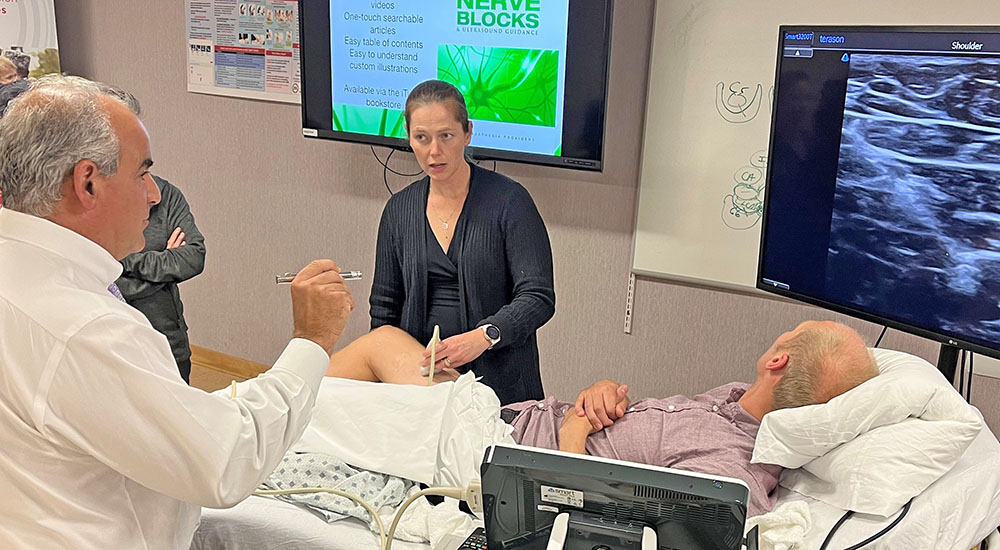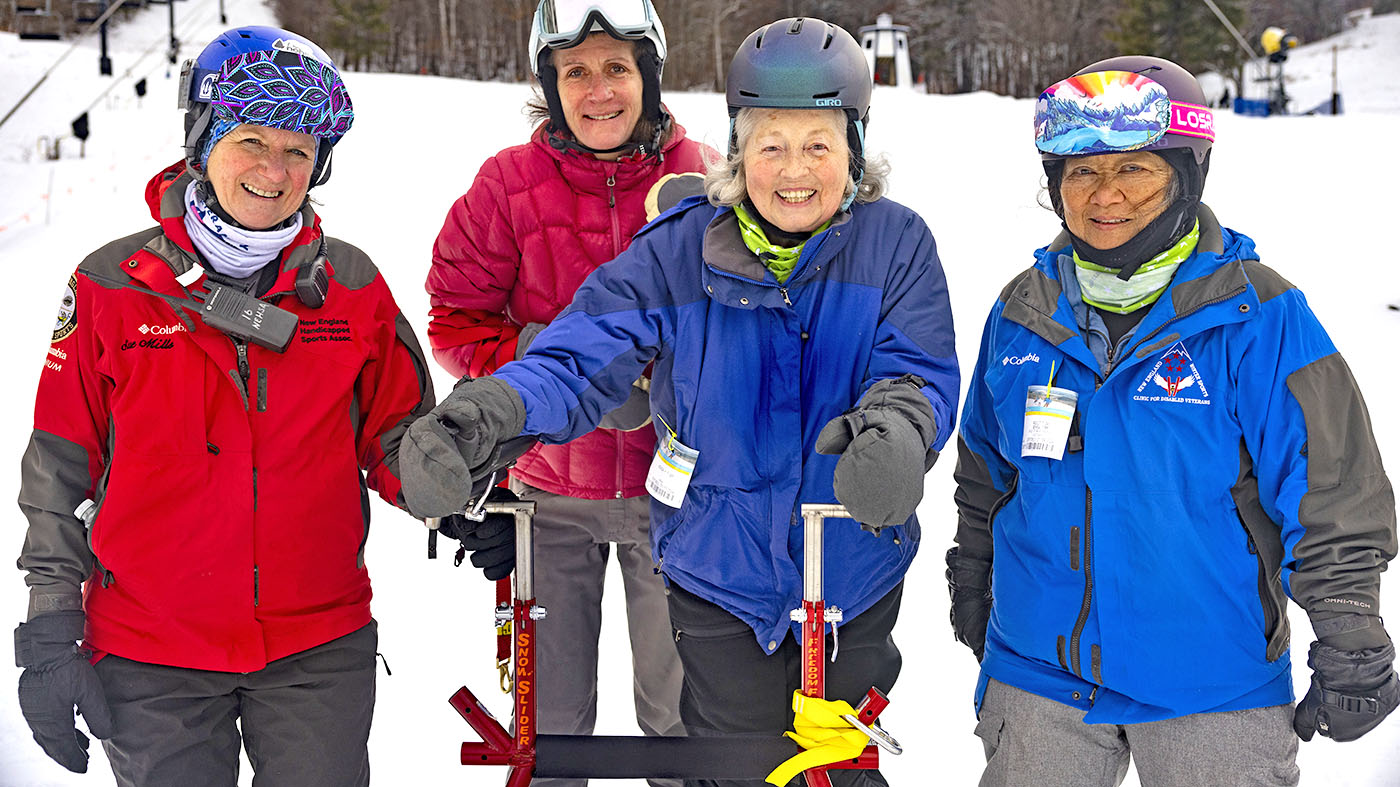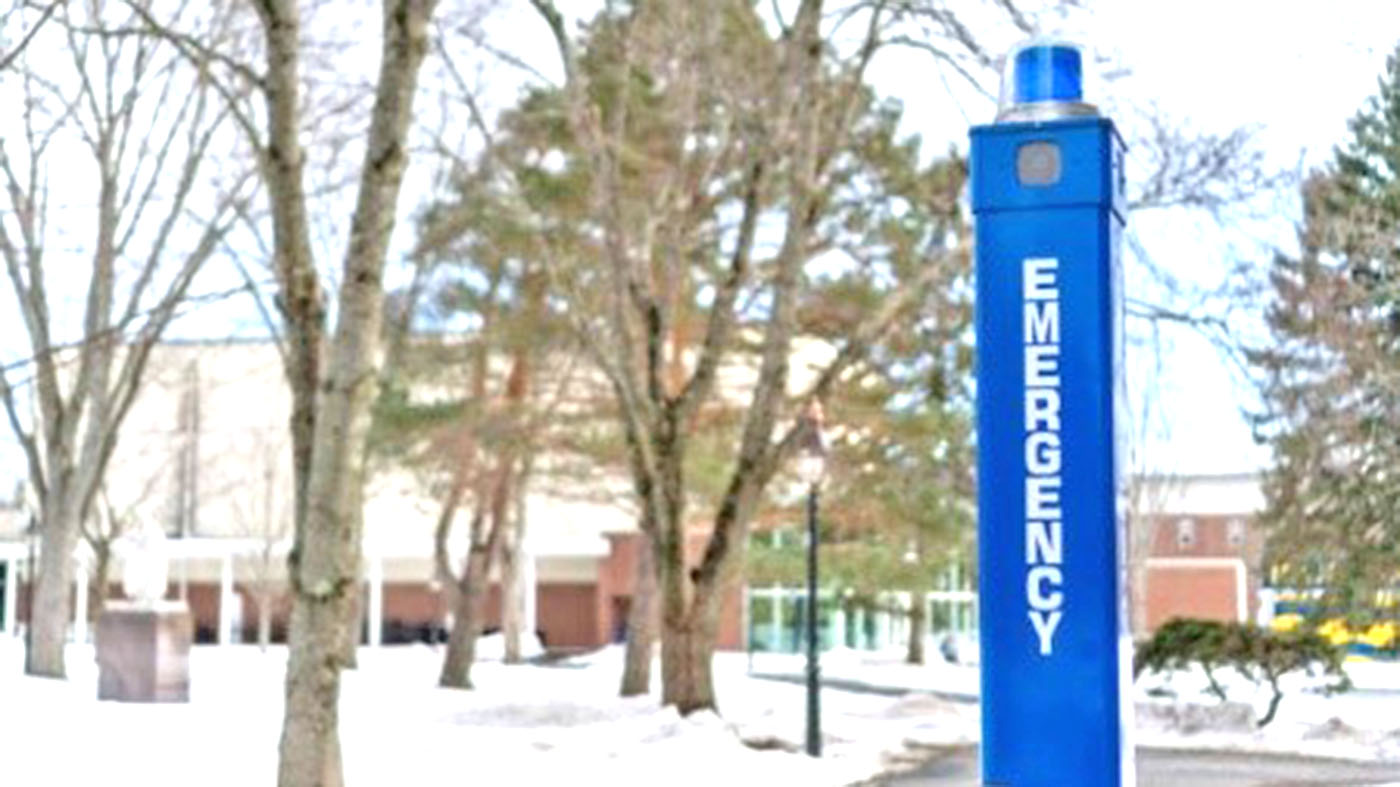VA anesthesia specialists from the Salisbury, Durham and Asheville VA medical centers recently participated in a course offering the latest in ultrasound guided peripheral nerve block techniques. The technology reduces a patient’s reliance on narcotics after surgery.
Nineteen anesthesia practitioners attended the training conference in Salisbury, N.C., to hone their skills in Ultrasound Guided Peripheral Nerve Blocks.
The use of ultrasound in anesthesia enables specialists to visualize the internal structures and place medications precisely at the target site. This reduces the block time and increases the success rate while improving the margin of safety.
According to Salisbury Chief of Anesthesia, Dr. Elizabeth Bell, Salisbury’s team of physicians and Certified Registered Nurse Anesthetists (CRNAs) have been using nerve blocks for several years.
Ultrasound guided techniques becoming industry standard
Bell is committed to the practice and has recruited anesthesiologists who are expert in regional anesthesia techniques. She added that they have been working with CRNAs one-on-one in nerve blocks for at least the past four years.
There has been steady growth over the last five years in the practice of nerve blocks in anesthesia delivery. Ultrasound guided techniques are quickly becoming an industry standard, based on results.
“With ultrasound guided techniques, we can more safely identify anatomic structures and increase the success rates for the various regional anesthesia procedures,” Salisbury Chief CRNA Jeffery Buchholz.
Buchholz says being able to see the area using ultrasound affords the opportunity to position the drug directly to the target nerve, to block impulses, improving block success rates.
The procedure represents a win for everyone. It lowers the risks associated with regional anesthesia and reduces dependance on general anesthesia, which has been shown to depress the immune system. It can also cause grogginess, nausea, vomiting, or in extreme cases, respiratory arrest.
Regional anesthesia enables patients to recover sooner
The use of regional anesthesia is less stressful on the body. It reduces inflammation, provides greater comfort and enables patients to recover sooner.
Conference coordinator Stephen Carrier says they hope to increase the number and frequency of the training conferences. This course, presented by Twin Oaks Anesthesia of Clearwater, Florida, totaled 19.5 hours of didactic and hands-on training, using live models. “As a result of the training, we intend to accelerate our in-house training and mentoring program. Our objective is to become a center for regional anesthesia excellence,” Buchholz said.
Bell, feeling the workshop was a success, added that they “Devoted two days for intensive study and practice on techniques we have already been using in our operating rooms. Some staff have had more experience than others so the event enabled all practitioners to feel more confident in their skills.”
Ultrasound-guided regional anesthesia provides best possible care to Veterans
Bell and Carrier agree that training staff on-site is the most efficient and cost-effective way to learn state-of-the-art regional anesthesia skills. While the training costs could be an initially prohibitive factor for some organizations, adoption of the practice appears to bring significant cost savings overall, justifying it in the long run.
“Incorporating ultrasound-guided regional anesthesia techniques in our practice has enabled our department to provide the best possible care to Veterans,” Bell said.
The educational offering was made possible by a grant provided by the Salisbury Foundation for Education and Research.
Topics in this story
More Stories
Spinal cord stimulation implantation helps Veterans suffering from chronic pain improve their quality of life without narcotics.
After Addison’s Disease and lumbar spine surgery, nurse Veteran Gayle Smith re-learned how to ski. “You have more courage than you think.”
Follow these 10 winter safety tips to stay warm, safe and protected during the cold winter.







